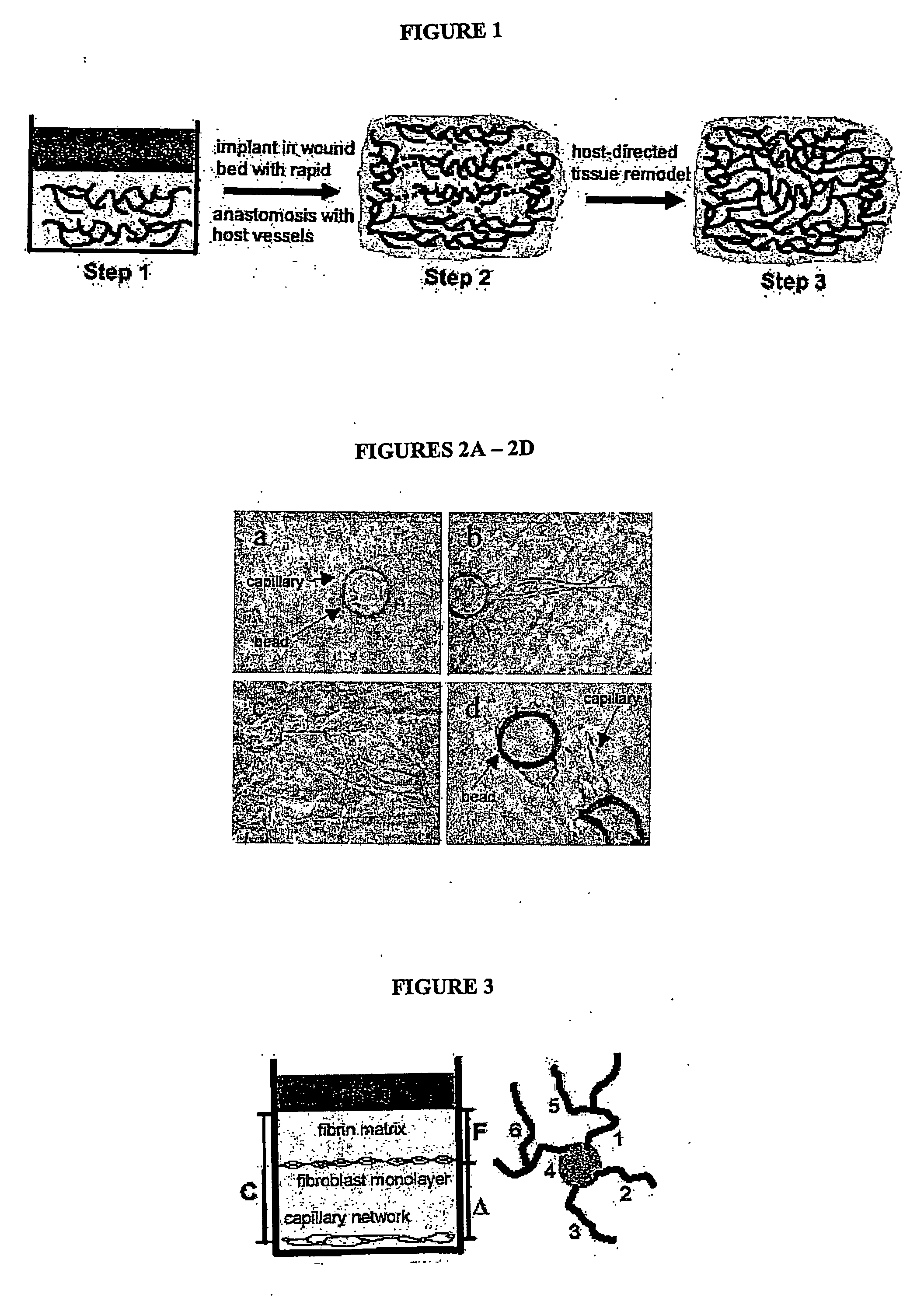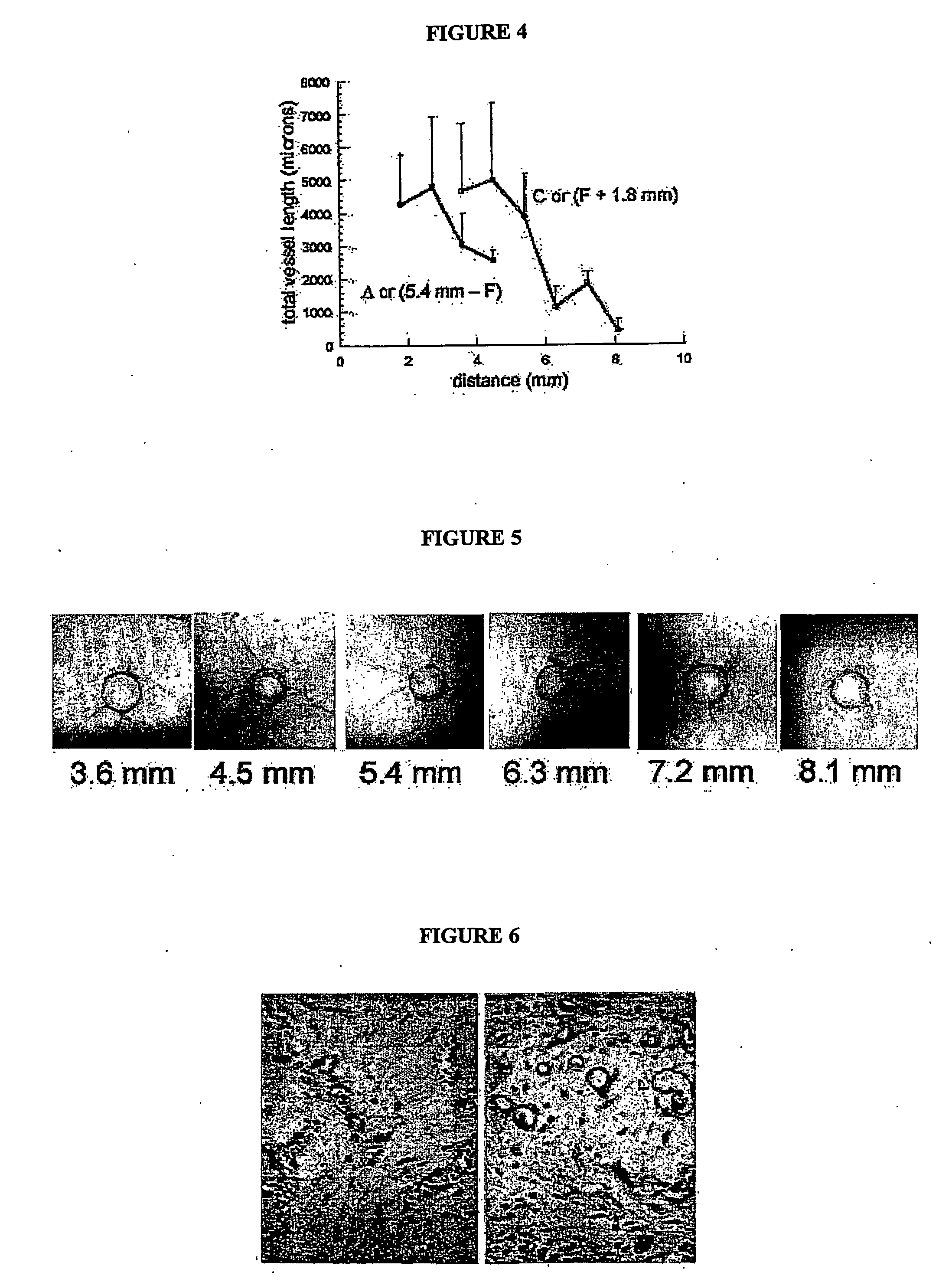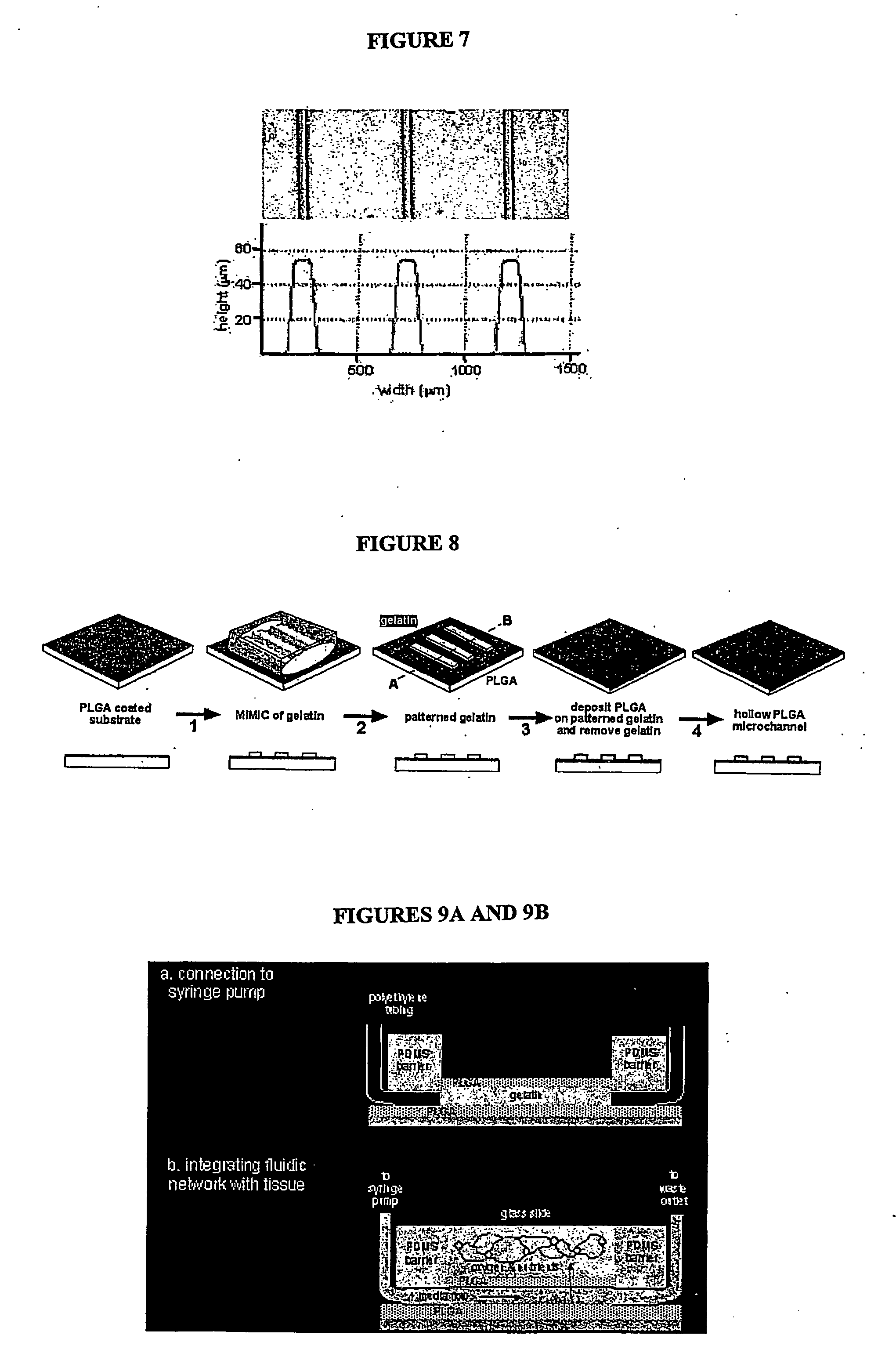Vacsularized tissue for transplantation
- Summary
- Abstract
- Description
- Claims
- Application Information
AI Technical Summary
Benefits of technology
Problems solved by technology
Method used
Image
Examples
example 1
In Vitro Formation of Vascular Networks
[0036] To provide the tissue construct of the invention with sufficient oxygenation, nutrient delivery and overall viability, endothelial cells [EC] can be induced to form complex, anastomosing capillary-like networks in vitro. The networks generated are stable (no apopotosis), exhibit long-term survival (several weeks), and readily anastomose to networks of capillaries with patent lumens. By controlling gel pH at approximately 7.4 (which affects rigidity), growth factor (VEGF, bFGF) concentrations (which affects vessel length and diameter), bead concentration at approximately 200 beads per ml of tissue (which affects degree of anastomosis and complexity of the network) and gel composition at approximately 2.5 mg / ml of Fibrin (the presence of fibronectin stimulates sprouting) capillary network formation is optimized.
[0037] Briefly, human umbilical vein endothelial cells are harvested and passaged twice, then seeded onto 150 micron diameter Cy...
example 2
Transplanted, In Vitro-Derived Capillary Beds Anastomose with Host Vasculature
[0042] A crucial concern in transplanting a vascularized tissue into a host is whether the two vascular networks will “hook-up” correctly, allowing perfusion of the transplanted vessels. In two different systems that transplanted vascular beds in tissue constructs spontaneously anastomose with host vasculature. In the first, human epidermis, including the superficial vascular plexus, was transplanted onto the back of an immunocompromised (SCID) mouse. After only three days, anastomoses between human and mouse vasculature could be identified using species-specific antibodies, and moreover, the skin survived through perfusion of human vessels, not through ingrowth of host vessels. Referring to FIG. 6 in the left panel, an H&E-stained section showing human in vitro-derived capillaries within a collagen gel, inserted under a skin flap on the back of a SCID mouse. Note that the capillaries are filled with bloo...
example 3
Manipulation of Gelatin at Micron Dimensions
[0044] A combination of soft lithography and micromolding in capillaries (MMIC) generates rows of gelatin with dimensions on the micron scale. A high-resolution photomask is generated and used to selectively expose photoresist by contact photolithography. The unexposed photoresist is removed leaving a positive relief that serves as the master mold. Prepolymer of poly(dimethlysiloxane) (PDMS) is cast on the master and cured to obtain a PDMS replica with embedded channels. A solution of gelatin (appropriate viscosity) is then wicked into the PDMS mold by capillary action MIMIC) and allowed to gel. The PDMS mold is removed leaving the micropatterned gelatin rows (FIG. 4). Referring to FIG. 7, the rows are approximately 100 microns in diameter, 55 microns in height, and 455 microns apart (bottom panel) as determined by a surface profilometer. The gelatin rows serve as the mold for the lumen of the microfluidic channels. Following coding with ...
PUM
| Property | Measurement | Unit |
|---|---|---|
| thickness | aaaaa | aaaaa |
| thickness | aaaaa | aaaaa |
| total volume | aaaaa | aaaaa |
Abstract
Description
Claims
Application Information
 Login to View More
Login to View More - R&D
- Intellectual Property
- Life Sciences
- Materials
- Tech Scout
- Unparalleled Data Quality
- Higher Quality Content
- 60% Fewer Hallucinations
Browse by: Latest US Patents, China's latest patents, Technical Efficacy Thesaurus, Application Domain, Technology Topic, Popular Technical Reports.
© 2025 PatSnap. All rights reserved.Legal|Privacy policy|Modern Slavery Act Transparency Statement|Sitemap|About US| Contact US: help@patsnap.com



